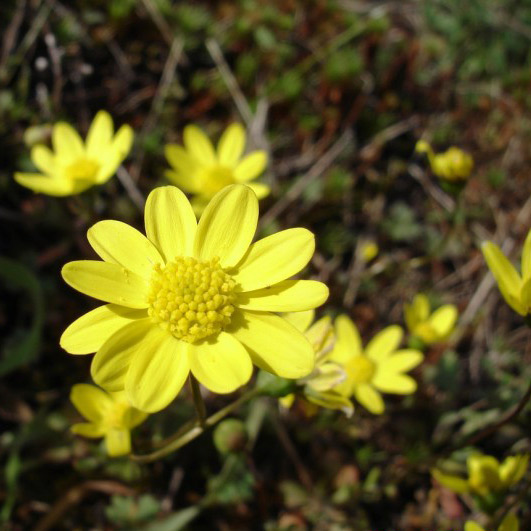Gold Star
Crocidium multicaule Hook.

overview
Delicate, several-stemmed annual, 5-30 cm tall, hairless except for loose cottony tufts in the axils of smooth, slightly fleshy leaves. Basal leaves are spatulate, while stem leaves are narrow and alternate; all leaves are entire or few-toothed. Flower heads have bright-yellow central discs, 8-13 ray flowers 4-10 mm long and a conic receptacle (Pojar and MacKinnon, 1994). Photo by Dave Polster.
family
Asteraceae
ecological setting
Early-flowering species on sandy flats, cliff ledges, rock outcrops and other dry open sites at low elevation. Scattered from southwestern BC south to California (Pojar and MacKinnon, 1994).
soil texture
Coarse textured and well drained.
nutrients
Low nutrient status.
soil reaction salinity
Neutral to mildly alkaline pH.
moisture regime
Dry to fresh.
shade tolerance
Shade intolerant.
successional status
Early seral on moister sites, climax on dry exposed sites.
bec zone subzone status
Dry rocky sites in Garry-oak ecosystems.
site rehabilitation
Possible application as a reclamation species on dry open sites.
landscaping
Possible showy annual for massed plantings in the dry garden.
fruit ripening time
June - July
seed collection time
July-August
crop intervals
Annual
collection and abstraction
Hand pick mature flower heads into paper bags for drying. Rub or thresh to separate seeds from the remaining flower parts. Winnow and screen to remove debris.
fruit seed dormancy treatment
No information. Use fall sowing until more is known about dormancy.
additional info and photos
For more information and pictures, visit the E-Flora BC website at www.eflora.bc.ca